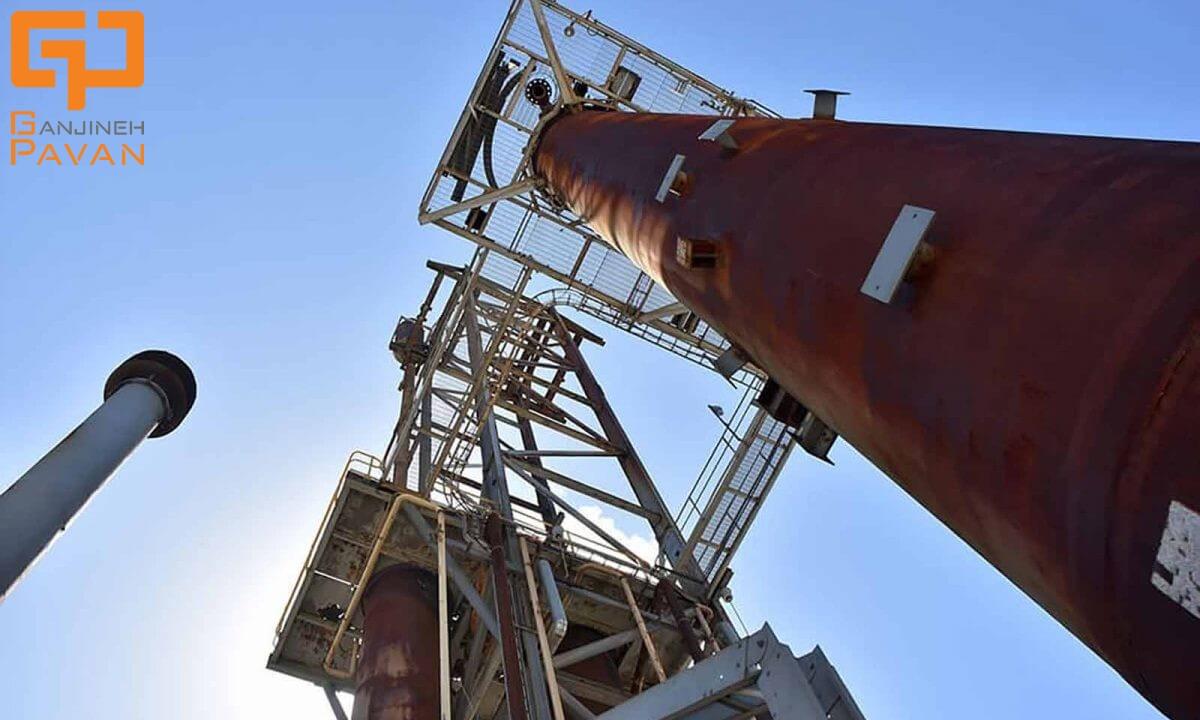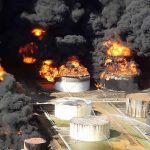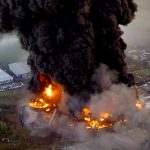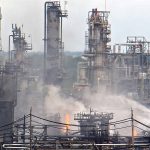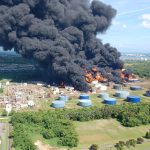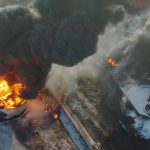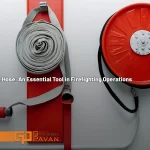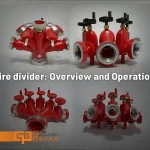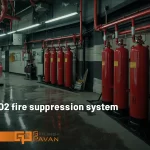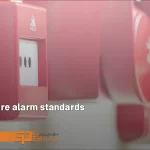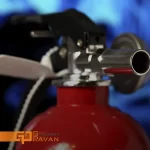Protecting Petrochemical and Gas Plants
Due to their hazardous nature, petrochemical and gas plants have always been vulnerable to the danger of fire, and the huge potential social, political, financial and ecological impacts of a major disaster mean that safety concerns are always a prime consideration.
Because a blaze in a petrochemical or gas processing facility can create a very sudden rise in temperature levels, the potential for the fire to spread is considerable. The effects of this can be devastating, as demonstrated by a major blaze at the UK’s Buncefield Oil Storage Terminal in 2005. The initial stage of the incident triggered a series of subsequent blasts that eventually engulfed 20 large storage tanks. The blasts were audible up to 200 kilometres away and the incident left 244 people requiring medical aid.
Other recent major fire and blast related incidents have included the 2005 BP refinery fire in Texas City, and the 2009 Cataño oil refinery fire. Both of these highlighted the crucial need for a robust evaluation of the risks involved, and the provision of effective fire and blast protection that can help limit the consequences of this type of disaster.
Hydrocarbon & Jet Fires
One of the most significant dangers faced by oil, petrochemical and gas facilities is the risk of a ‘jet’ or ‘spray’ fire. A jet fire usually involves a forceful flame, created by highly combustible fuel that is released in a particular direction as a result of a leak or other breach in the container that houses the fuel. This situation can create particularly intense levels of localised heat, plus exaggerated degrees of heat flux and turbulence, and it is far more capable of eroding fire protection measures, damaging structural steelwork and rupturing other vessels and pipe work than a non-hydrocarbon blaze.
The properties of a jet fire depend on many factors such as fuel composition rates and release conditions, and although considerable research has been done into these topics over recent years there are still many areas of uncertainty surrounding the subject. Although the dangers involved are easily understood, the process of heat transfer from the fire to the storage vessel is not. This is one of the reasons jet fires, and indeed hydrocarbon fires in general, are regarded as being difficult to control with active fire protection methods alone, as these are designed only to extinguish a blaze. This creates a real requirement for jet fires to be contained by the use of passive fire protection measures, where the emphasis is on insulating a steel or concrete structure from the effects of fire and limiting any rise in temperature.
Structural Steel Protection
Petrochemical facilities often include major structural components made from steel – a material that is sometimes viewed as being less prone to the damaging effects of fire than other alternatives. Steel is seen as a rigid, strong and reliable material that will withstand whatever comes its way. Unfortunately this is not always the case. When exposed to temperature rises, steel can begin to lose its strength with alarming speed, particularly when under duress from hydrocarbon and jet fires. Passive fire protection measures slow the rate of heat transfer into the steel structure and significantly delay the time it takes to reach the point where structural failure occurs. This also allows more precious time to evacuate personnel and bring a fire under control, helping to limit the destructive effects of a major blaze.
Many hydrocarbon blazes result from an explosion in the vicinity of flammable products, which often causes containers to rupture and start leaking. Thus it follows that if it is to be effective, any type of passive fire protection must be able to withstand a degree of explosive force, so that it remains in place and provides on-going protection. Perhaps the most effective method of protecting steelwork in such high risk areas is the use of a spray-applied coating system.
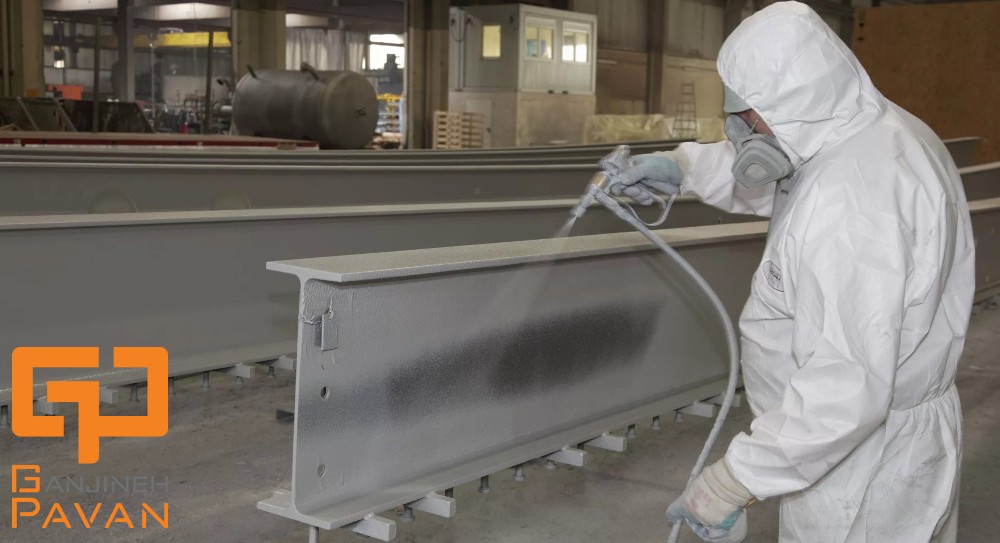
Protective Coating
This type of integrated coating system can usually provide reliable protection against an initial blast and any subsequent blaze. This makes it ideal for use on various types of structures and vessels in oil, gas and petrochemical facilities. The performance of this type of solution has been proven in many hundreds of applications, and some systems have been independently tested and approved to internationally recognised test standards, such as UK (BS 476: Parts 20-21: 1987 Appendix D), plus International Standard ISO 834, and USA (ASTM E119, UL263 and UL1709 – Design No. XR719).
The better systems available offer a factory-controlled premix of vermiculite and Portland cement, which is mixed with potable water before application. This can be done by spray-application over a light, wire mesh framework, which produces a monolithic coating that can withstand the thermal shocks present in a high intensity hydrocarbon fire. It acts as a highly effective thermal barrier that slows down the heat transfer process, increasing the time it takes for the structural steel to reach its failure temperature. This, in turn, can delay or prevent the collapse of the whole structure, potentially saving lives in the process.
A coating of this type will not usually promote any corrosion of the steelwork to which it is applied. However, a primed substrate is often used to create long-term resistance to corrosion, particularly when the protected structure is to be left exposed to the elements. In addition to providing robust protection to structural steelwork, this solution is also suitable for protecting concrete structures, as it helps prevent the process of explosive spalling. Triggered by sudden temperature rises, the process of spalling causes micro-cracks to appear in the concrete. These can result in the surface of the concrete breaking away, and will eventually lead to a significant loss of structural strength.
Ideal for off-site application by either spray, roller or float finishing methods, this type of fire protection will not crack under mechanical impact, and furthermore, it also has a low density composition that reduces any dead load added to the structure being protected. Various thicknesses are required to achieve the desired level of protection for a range of different applications. However, any reputable system manufacturer will be able
to provide accurate computer-based thickness calculations for specific fire resistance requirements. The durability of fire protection can also be enhanced by the application of a top-coat surface coating that will protect against the ingress of salt spray, wash-down water, chemical spills, rainfall, sprinkler deluge systems and the subsequent freeze/thaw damage, ensuring that the fire protection layer below remains intact and able to deliver the maximum performance. Flexible, flame retardant and mould resistant, top coats will help reduce the carbonation rate of cement-based products and can also be used on masonry, brickwork or blockwork.
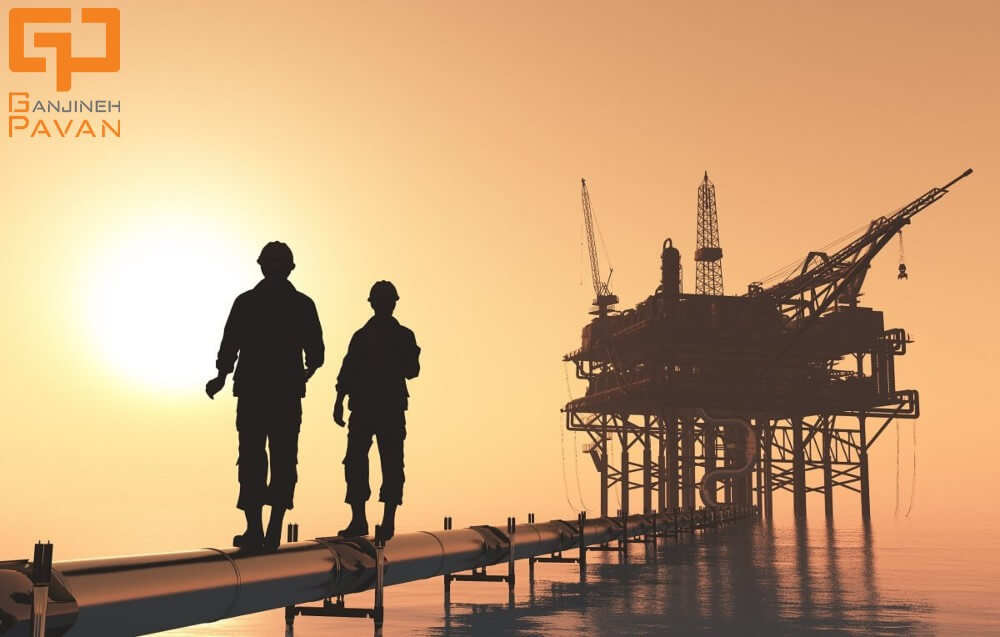
Protecting People & Equipment
This type of protection is ideal for structural and storage vessel applications. However, increasingly stringent health and safety requirements mean that vulnerable equipment and plant personnel also need the maximum level of protection, and this requires a different approach.
Composite steel panel systems can provide an ideal solution to this requirement, as they are lightweight, strong and resistant to fire, blast, impact and corrosion. These systems can be used as a building material to create fire screens, fire doors, ceilings, enclosures, ductwork and even escape routes, providing protection to process-critical systems and protecting the lives of employees. Integrated fire protection systems such as this have been thoroughly proven over many years on high-risk hydrocarbon applications, as well as numerous large rail, metro and airport projects. As a result, there is now a wide range of system specifications available to suit different applications.
Composite steel panels typically consist of two punched steel sheets that are mechanically bonded to either side of a non-combustible composite core of fibre-reinforced cement, capable of delivering up to 240 minutes of fire and blast protection. This type of system is often classed as ‘non-combustible’ to BS 476: Part 4:1970 and to Clause 10 of EN 13501-1:2002. Protective walls can be designed to provide high blast resistance and to meet most of the generally recognised fire curves, including hydrocarbon and cellulosic. Composite steel panel systems have been proven to withstand the most demanding and hostile environments, as well as extremes of temperature and high thermal shock levels.
The panels will retain their ability to perform even in the aftermath of a fire, thus making any subsequent rescue operations easier than they might otherwise have been. Impressive impact and moisture resistance are key characteristics of a composite panel system, along with the ability to withstand the effects of fire suppression and deluge systems. This type of versatility means that this method of protection can be used to create bespoke constructions, with walls and partitions built in layout and framing configurations designed to meet individual project requirements.
There is usually no requirement for additional foundation or construction work, which makes installation a relatively quick and easy process. Combined with their multi-functional role, this makes composite steel panels a very attractive protection option.

Protection in Action
A project to build the GL2-Z LNG natural gas project in Arzew, Algeria, was recently completed using a spray applied, single package premix system – in this case, Promat’s Cafco Fendolite MII – as a primary part of the passive fire protection. Specialist contractors installed over 1,500 tons to protect steel structures and vessel skirts against fire. The specification was made on the basis of a number of significant factors, including the product’s track record on this type of application, and the technical support available from the manufacturer.
A similar quantity of the same product was used to provide two-hour hydrocarbon pool and jet fire resistance for three phases of the Sangachal Terminal Expansion Project in Azerbaijan. The system was used on concrete support plinths in the area that receives high pressure crude oil from the offshore platforms. Here, it helps protect against the risk of explosive spalling of concrete and the consequent collateral damage to the surrounding pipe work. This project was funded by a consortium led by BP, which had a lead role in the technical specification process. BP recommended this particular solution after experiencing its performance during an incident at the Grangemouth Refinery in Scotland. Here, Cafco Fendolite MII had been applied to a pipe support structure that withstood a direct seven-hour jet fire. The protection remained in situ for the entire period, protecting the steel supports and preventing a huge fire that would have resulted in a significant asset loss.

